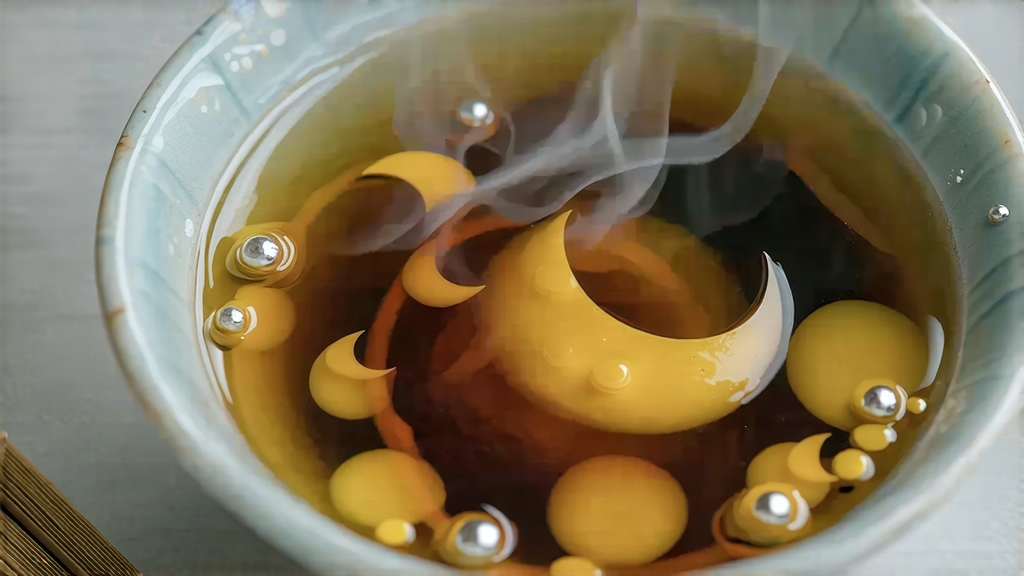
When the first spring mists rise above the granite outcrops of northern Fujian, the tea gardens of Fuding and Zhenghe enter a season so hushed that even the birds seem to speak in whispers. It is here, between the 15th of March and the 10th of April, that the most luminous expression of Chinese white tea—Bai Hao Yin Zhen, literally “White Hair Silver Needle”—is coaxed from the earth with a restraint that borders on reverence. To the uninitiated, the finished product looks almost too delicate to be tea: straight, silvery spears no longer than a little finger, downy as moth antennae, releasing an aroma of dew-damp hay and distant apricot blossom. Yet within those down-covered cells lies a lineage that reaches back to the Song imperial court, a chemistry celebrated by modern nutritionists, and a flavor so subtle that it demands the drinker meet it halfway with patience and poise.
Historical records first mention “white tea” during the Huizong reign (1101-1125), when a cake of pale leaves was presented to the emperor as “Yin Zhen of Dongting.” Whether that tea resembled today’s needle-shaped leaf is debated, but by the late Ming dynasty local gazetteers already describe Fuding farmers sun-drying freshly plucked buds for tribute. The critical transition from compressed white bricks to loose, needle-shaped tea occurred in the 1790s, when export demand from European pharmacies—eager for the “cooling” properties ascribed to white leaf—encouraged minimal handling and maximum visual appeal. Thus the modern Silver Needle was born not in the palace but on the wharves of Canton, priced by the liang and wrapped in silk to protect its fragile trichomes.
Botanically, Bai Hao Yin Zhen must be crafted from specific cultivars rich in protective leaf hairs: Fuding Da Bai, Fuding Da Hao, and, in smaller lots, Zhenghe Da Bai. These large-bud varieties store a higher ratio of caffeine to theanine than later-flushing bushes, giving Silver Needle its paradoxical calm alertness. Only the unopened shoot, still sheathed in two miniature leaves affectionately called “fish tails,” is plucked. A single kilo requires roughly thirty-eight thousand buds, all gathered before ten o’clock on any given morning so that the dew acts as a natural moisturizer during the long wither.
Processing is disarmingly simple on paper, fiendishly difficult in practice. The buds are spread on bamboo trays called “water screens” and left to wither for thirty-six to sixty hours, depending on humidity, temperature, and the tea master’s reading of the sky. No fixing, no rolling, no roasting—only a gentle nudge from sun, shade, and breeze. During this slow dehydration, oxidative enzymes remain active at micro-levels, generating floral terpenes and softening grassy aldehydes. When the bud’s moisture drops to around 10 percent, a final desiccation in low-temperature charcoal ovens halts change and locks in the silver sheen. The entire cycle demands a monastic attention: too much sun reddens the tips; too little air encourages mold; an oven half a degree too hot turns velvet into straw. In Fuding they say the tea is “raised, not made,” echoing the belief that good Silver Needle is coaxed rather than manufactured.
Unlike green tea, whose vibrancy fades within months, properly stored Silver Needle continues to evolve for decades. The key is low oxygen, low light, and moderate humidity—conditions once found in clay jars buried under rice. A five-year-old needle takes on notes of dried longan and warm beeswax; at fifteen it acquires a medicinal sweetness reminiscent of aged ginseng. Connoisseurs in Hong Kong compare the transformation to that of a Chenin Blanc, where youthful citrus bows to honeyed depth without surrendering spine.
To brew Silver Needle is to practice the art of “revealing the hidden.” Begin with glass or porcelain; yixing clay, however prized, mutes the high-register aromatics. Use 3 grams—about two heaping teaspoons—for every 120 milliliters of water. The temperature must stop just short of boiling, 85 °C being the oft-quoted figure, but experienced hands prefer